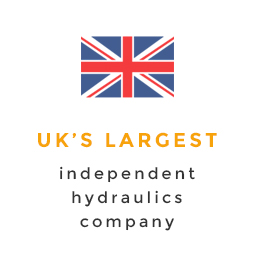Aviation Hydraulics
Dependable aviation hydraulics are crucial for the safe operation of many of an aircraft's in-flight functions. While hydraulic brake systems have been used in aircraft since the 1920s, as systems have become more advanced, hydraulic power has become increasingly important to other functions as well.
Today, aircraft designers use hydraulic systems for a multitude of aircraft functions because they are cost-effective to install, they will operate effectively whatever the in-flight conditions, and they are relatively simple to maintain.
History
The first aviation hydraulics were used in the 1920s and 1930s for aircraft brakes and the operation of landing gear. Planes such as the DC-3 had hydraulic-powered wing flaps by 1934.
In the early 1940s, aviation hydraulics were further developed and were used to power the flight control surface of the first U jet aircraft (the P-80) and the Lockheed Constellation - the four-engined, propeller-driven airliner built by Lockheed from 1943.
Dave Grant, an employee of Hughes Aircraft Co, created a fully hydraulic system in 1946 for his aircraft, the Spruce Goose, which he co-piloted.
The 1960s was a time of major innovations in terms of aviation hydraulics. The variable delivery hydraulic pump was developed extensively, as were commercial jet hydraulic systems. In addition, hydraulic systems were introduced for marine and underwater applications.
In the 1970s, hydraulic specifications for advanced military aircraft were introduced, while the 1980s saw the first lightweight hydraulic system design concepts and the development of the smart pump and actuator.
Modern systems
Today, hydraulics are commonly used for flight control surfaces, brakes and landing gear. The fundamentals of aviation hydraulics are practically the same, whether they are being used in a small civilian, propeller-powered aircraft or the largest multi-engine jet.
The hydraulics will vary in complexity, but one factor remains constant - the aviation hydraulics must be durable and reliable enough to function for long periods without any risk of failure.
The same basic components are used in all aircrafts' hydraulics, but the complexity varies depending on the application that the hydraulic system fulfils.
Components
Basic components include the pump to generate power by pressurising the system, the reservoir to store the hydraulic fluid and the actuating cylinder, where the functions of the hydraulic system are performed. An example of this is when an aircraft's flaps are hydraulically controlled, so the actuating cylinder is connected to the flaps so that the pilot is able to position them using his controls.
The pressure relief valve will protect the hydraulic system from being over-pressurised, while the heat exchanger keeps the hydraulic fluid at the correct temperature.
These components make up a basic hydraulic system in a plane. However complex the system, they are always present.
How it works
The principle of how the hydraulic system works – the science behind its operation – is Pascal’s Law. This states that pressure applied to a liquid anywhere within the hydraulic system causes equal pressure to be distributed everywhere else within the system.
When the pilot activates a hydraulic system using a switch or flight control device, this activates the pump and pressurises the system. This sets the actuator in motion and its movement is transferred to the control surface or another device including brakes, landing gear or the cargo ramp. This then moves into the required position as a result.
To reverse this movement, the pressure is released from the system and the opposite movement occurs.
Flight safety
The most important part of aviation hydraulics is their dependability, as they must ensure flight safety because people's lives are at stake.
There are many benefits to hydraulic systems as a power source. They combine the advantages of being lightweight with being easy to install. There is also the simplicity of inspecting the system and its minimum maintenance requirements. Aviation hydraulics are almost 100% efficient, with only minimal loss through fluid friction.
The greatest benefits of the aircraft hydraulic system are reliability and dependability. With the underlying mechanical principles being relatively simple, the number of moving parts is relatively low, so this minimises the risk of failures in the system.
Hydraulic systems respond quickly to control inputs, enabling precise control of the aircraft. This is crucial for safety reasons, so the pilot can activate flight control functions with no fears of how long they will take to action.
Hydraulic fluid is not affected by compression - air will compress with climate change, but hydraulic fluid doesn't. This is a very important factor, since pressure changes occur in aircraft, depending on its altitude. Although it doesn't affect hydraulic fluid, it would affect a system that was powered by gas.
With features that are critical to in-flight operations and safety, hydraulic systems are extremely reliable and have many advantages as a power source for aircraft.
Phoenix Hydraulic Services is one of the UK's largest independent hydraulics companies. Our hydraulic engineering service is carried out by fully qualified engineers, who will be happy to visit you onsite to help diagnose and repair your hydraulic system.
Please contact us for further details.


